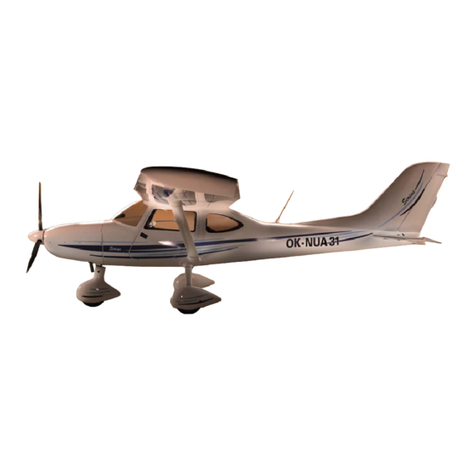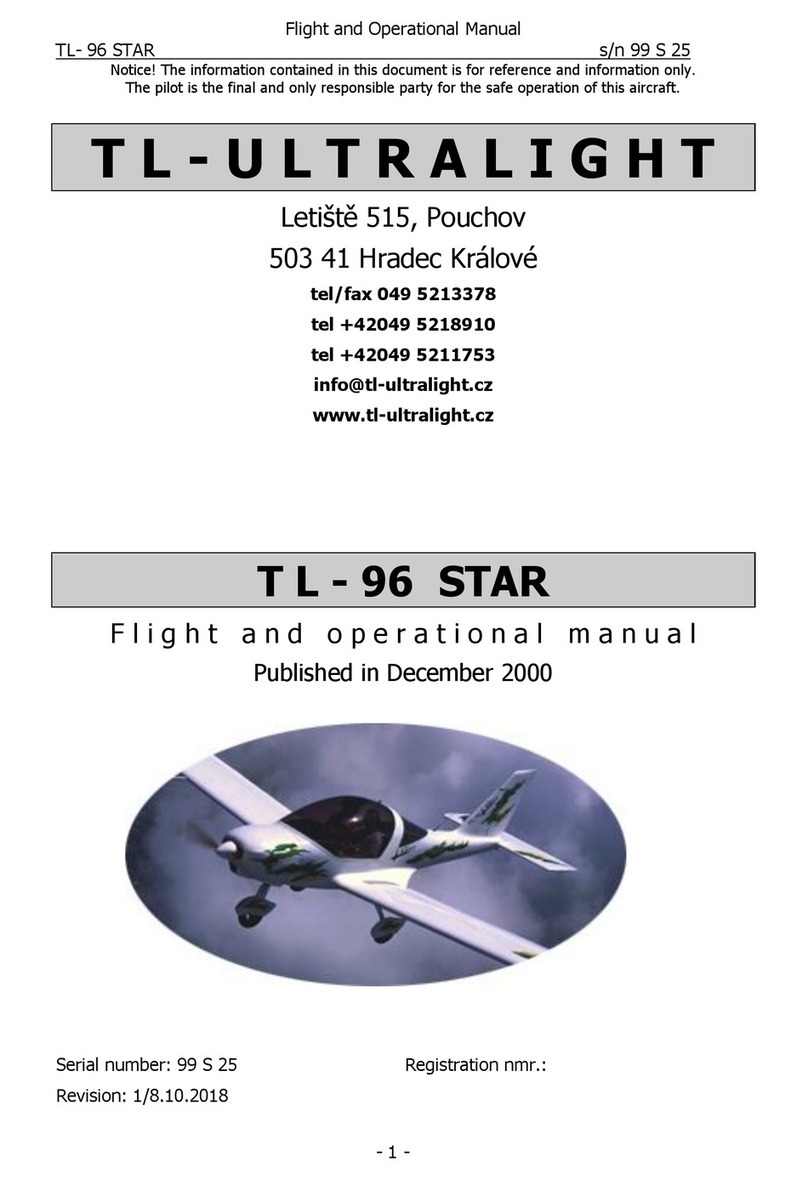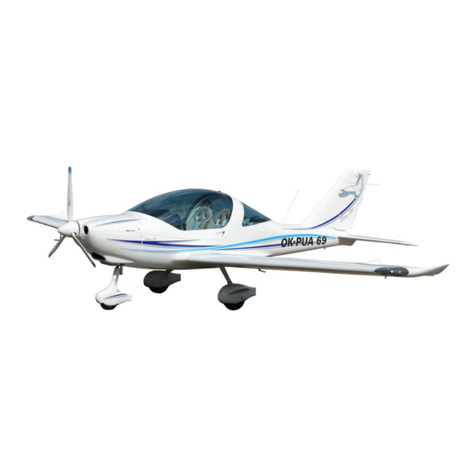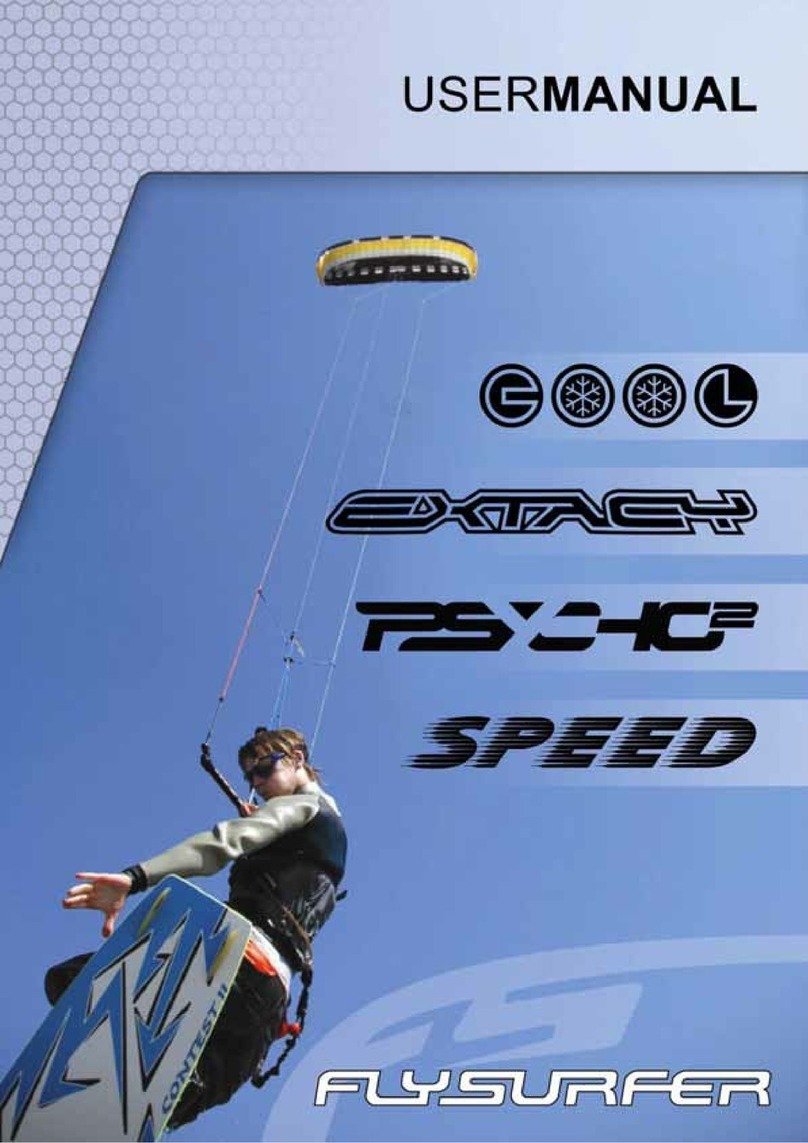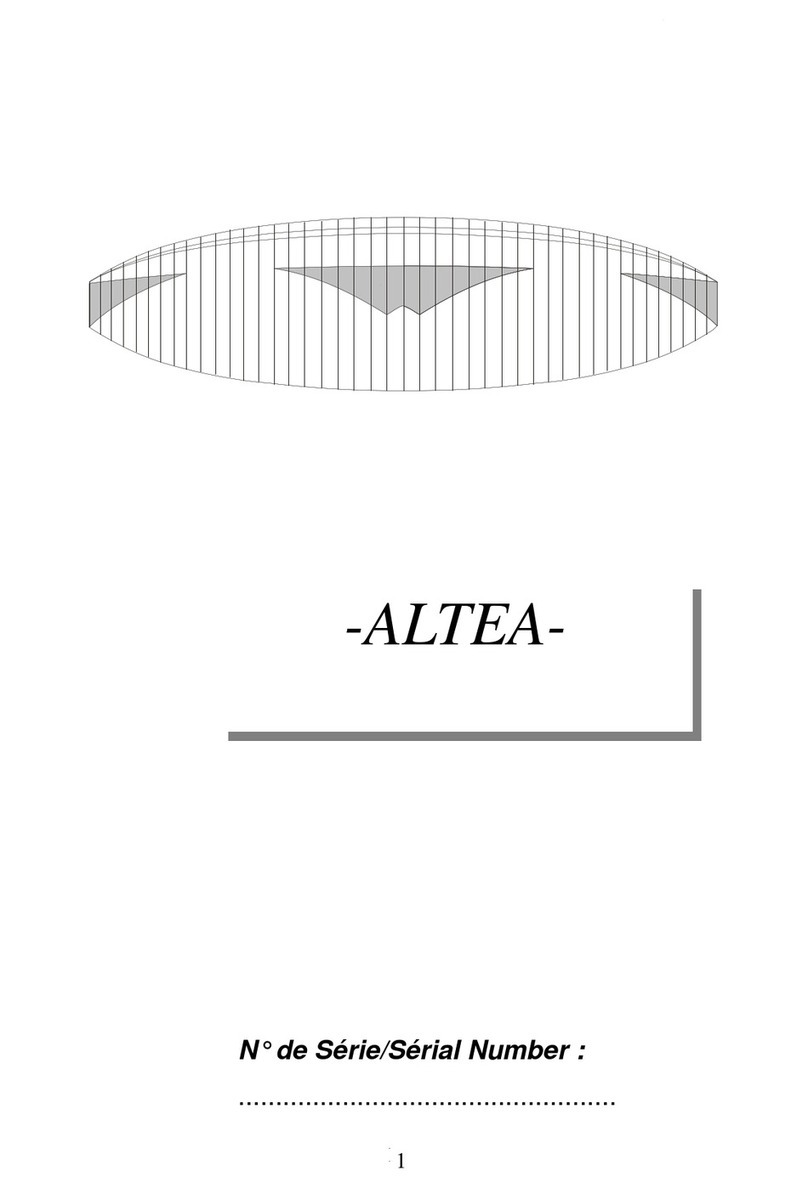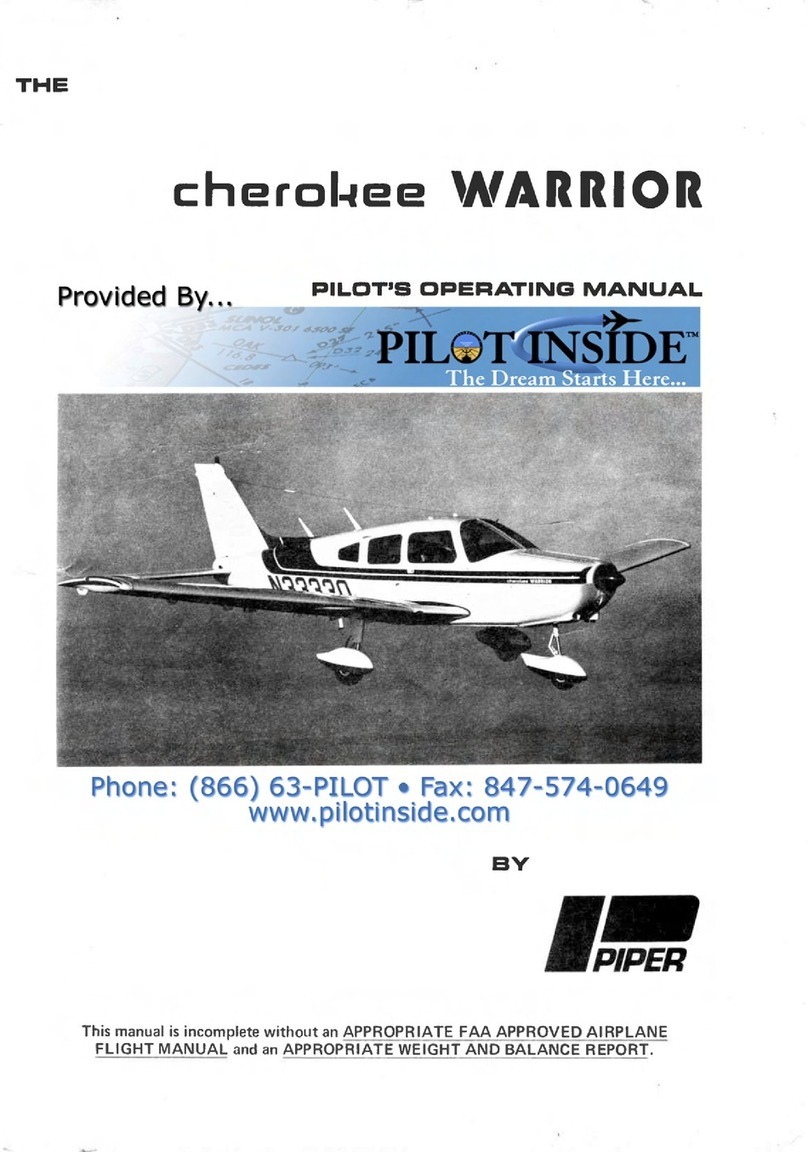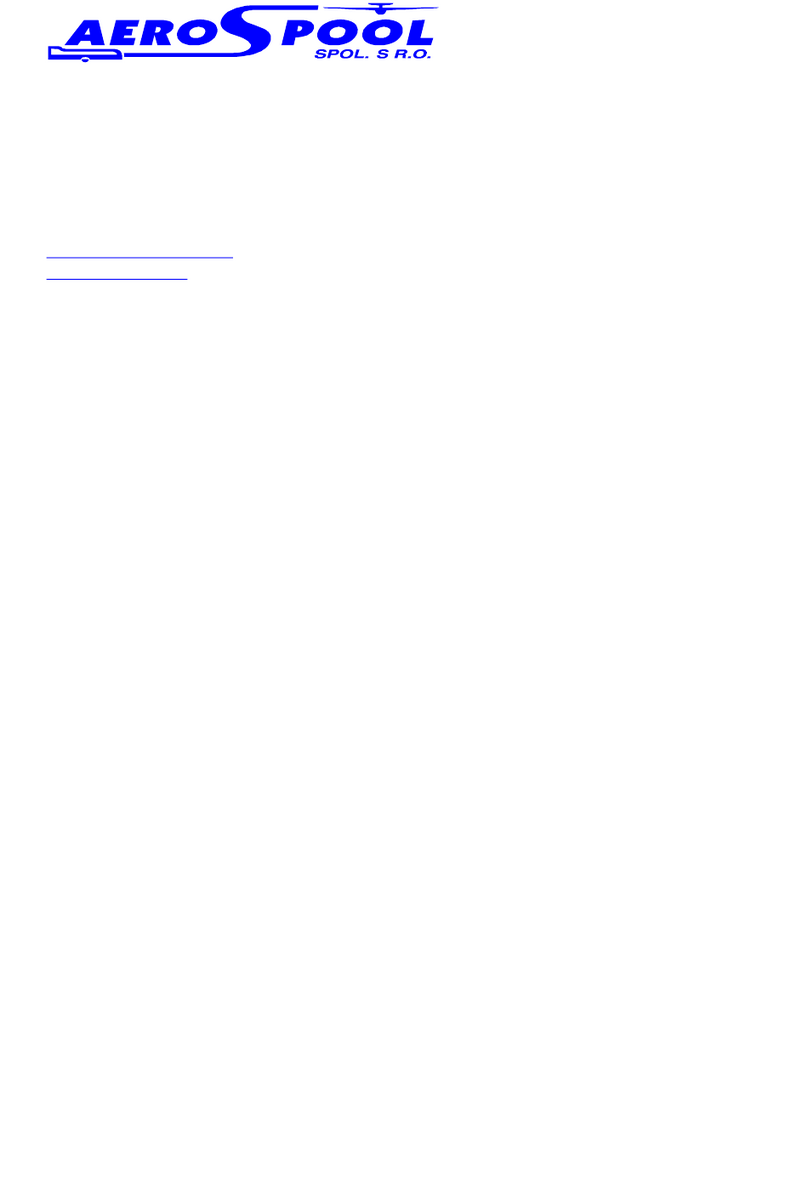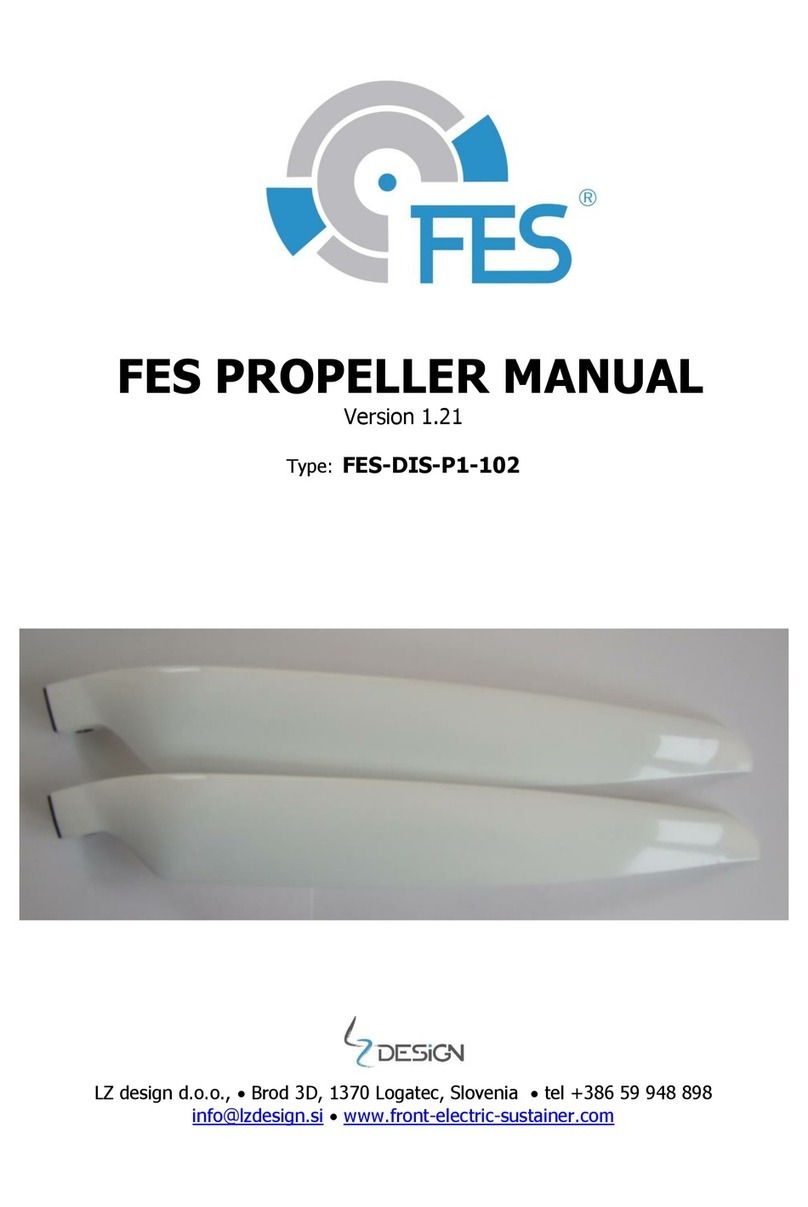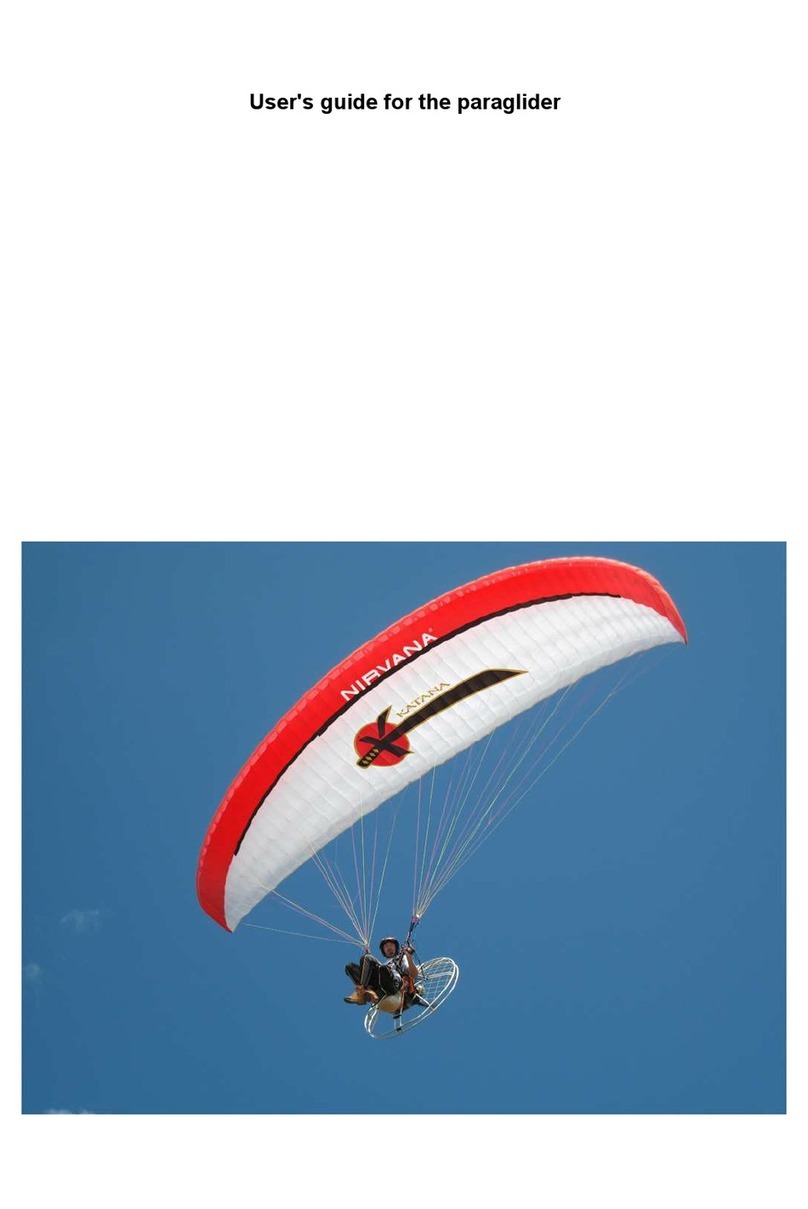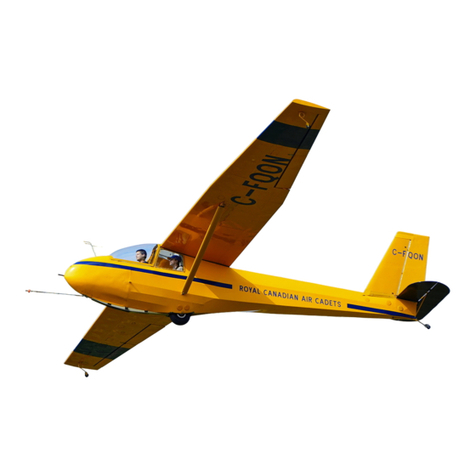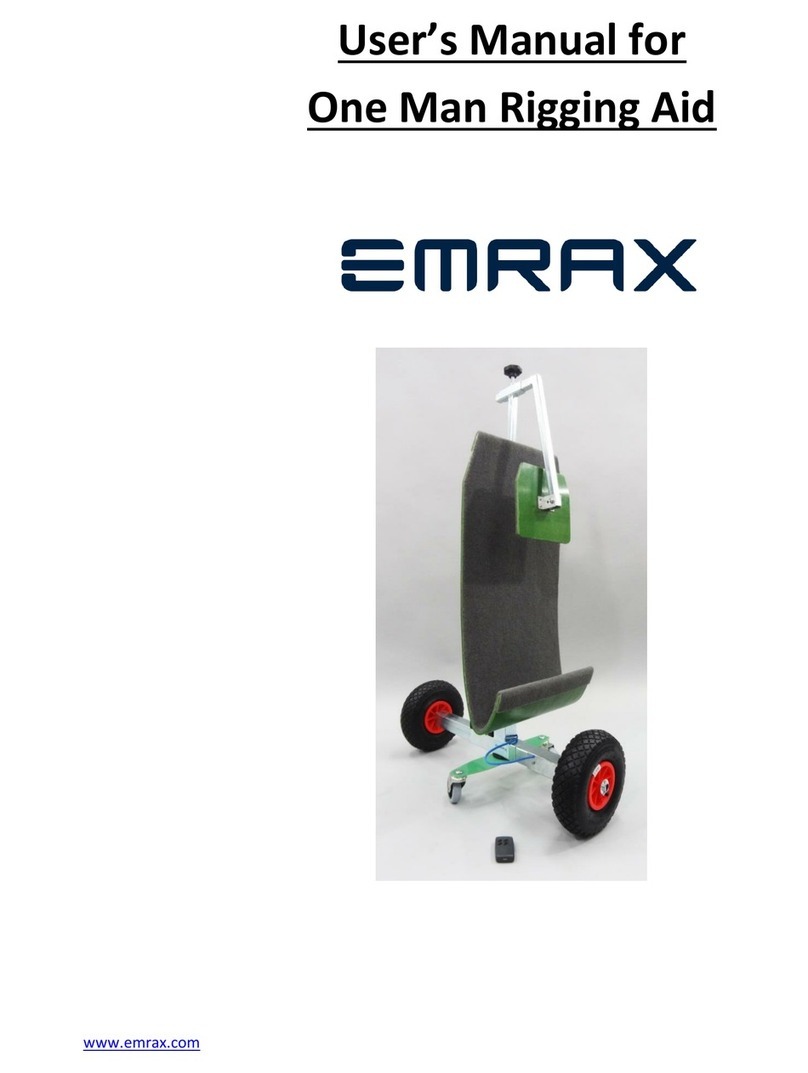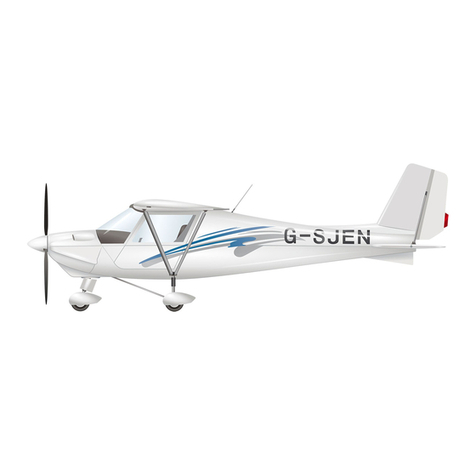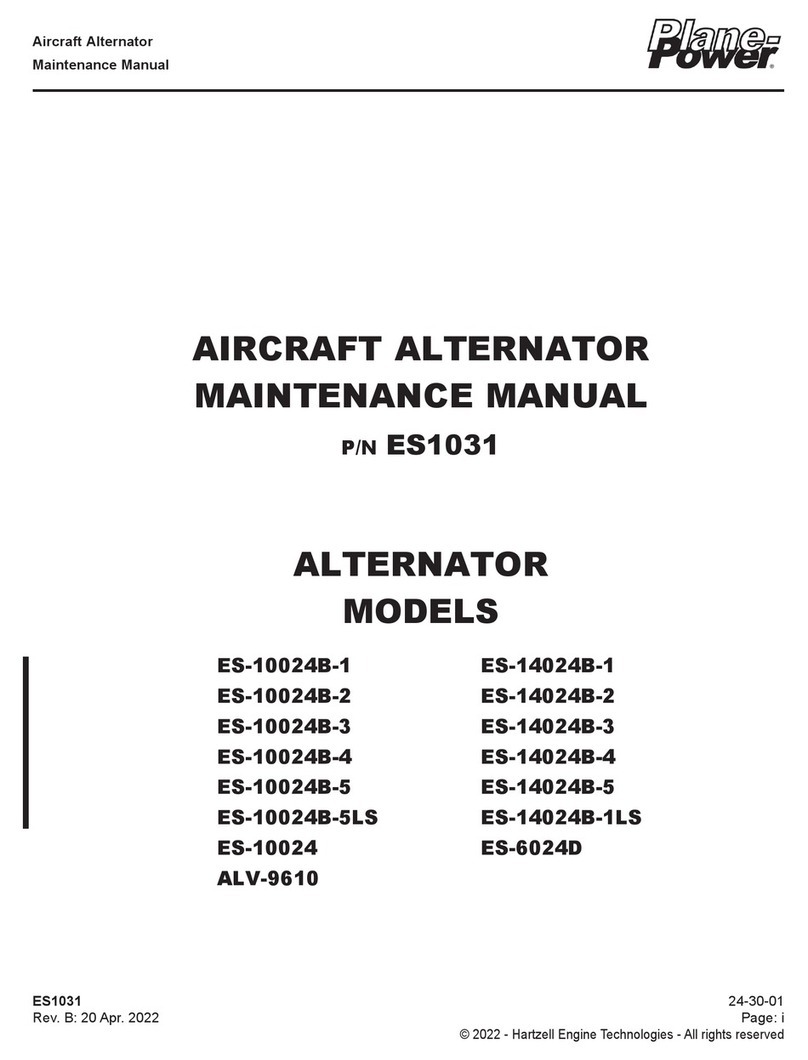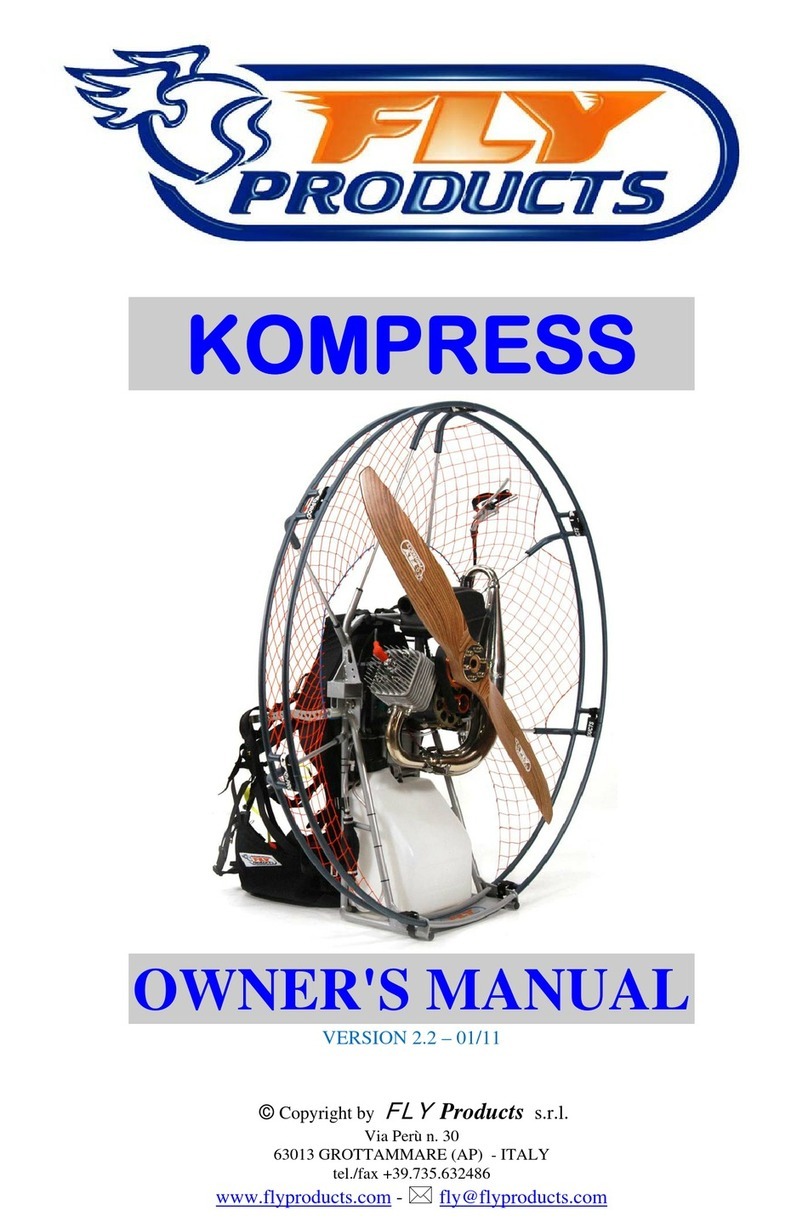TL Ultralight TL-3000 Sirius User manual

TL-3000 Sirius
AIRCRAFT MAINTENANCE MANUAL
Author: Ing. Martin Zahálka Ph.D
THIS DOCUMENT AND TECHNICAL DATA HEREON DISCLOSED ARE PROPRIETARY
TO TL-ULTRALIGHT AND SHALL NOT BE USED, RELEASED OR DISCLOSED IN WHOLE
OR IN PART WITHOUT EXPRESS WRITTEN PERMISSION FROM TL-ULTRALIGHT.

0 - 0
(THIS PAGE BLANK)

0 - 1
Dear Sirius Owner:
Congratulations on the purchase of your Sirius! You will find your new
TL-ULTRALIGHT aircraft very enjoyable, extremely economical, and easy to
maintain. The Sirius is the ideal Light Sport Airplane. It is fast, economical,
pleasing to the eye, and user friendly. We at TL-ULTRALIGHT Sport Aircraft
are certain that your Sirius will give you hours and hours of leisure flying and
enjoyment. With this Aircraft Maintenance Manual (AMM), we hope to help
inform you about the support and operation of your aircraft. Should there be
any questions or errors found in your reading this manual please contact us
immediately and we will issue a clarification.
Thank you again for your business. We look forward to a continuing satisfied
customer relationship. Feel free to contact us if you have any questions or
comments regarding your Sirius.
Fly safe! Fly fun!
Jiri Tlusty
TL-ULTRALIGHT, s.r.o.
Airport 515, Pouchov
503 41 Hradec Králové
CZECH REPUBLIC
www.tl-ultralight.com

0 - 2
(THIS PAGE BLANK)

0 - 3
0.1 Table of Content
0. ITRODUCTION
...........................................0-2
0.1. Table of Content
...........................................0-4
0.2. Notes, Cautions, and Warnings
...........................................0-8
0.3. List of Revisions
...........................................0-10
1. GENERAL INFORMATION
...........................................1-1
1.1. Introduction
...........................................1-1
1.1.1 Scope
...........................................1-1
1.1.2 Safety
...........................................1-1
1.1.3 Referenced Documents
...........................................1-2
1.1.4 Definitions
...........................................1-2
1.1.5 Maintenance and Repair
...........................................1-4
1.1.6 Line Maintenance and Repairs
...........................................1-5
1.1.7 Heavy Maintenance and Repairs
...........................................1-5
1.1.8 Overhaul
...........................................1-6
1.1.9 Alternation, Modification or Major Repair
...........................................1-6
1.1.10 Task –Specific Training
...........................................1-7
1.1.11 Safety Directives
...........................................1-7
1.1.12 Views, dimensions
...........................................1-9
1.1.13 Aircraft Specifications
...........................................1-11
1.1.14 Engine Specifications
...........................................1-11
1.1.15 Propeller Specifications
...........................................1-12
1.1.16 Structural Materials
...........................................1-13
1.1.17 List of disposable replacement parts
...........................................1-14
1.1.18 Aircraft and engine approved equipment
...........................................1-15
1.1.19 Weight and Balance Information
...........................................1-20
1.1.20 Tire Inflation Pressure
...........................................1-27
1.1.21 Approved Oils and Capacities
...........................................1-27
1.1.22 Recommended Fastener Torque Values
...........................................1-28
1.1.23 General Safety Information
...........................................1-29
1.1.24 Report „Feed Back“ Forms
...........................................1-30
2. INSPECTIONS
...........................................2-1
2.1. Introduction
...........................................2-1
2.2 Airplane Files
...........................................2-1
2.3 Washing and Cleaning the Airplane
...........................................2-2
2.4. Filling the Fuel Tank
...........................................2-3
2.5 Engine Visual Inspection
...........................................2-5
2.6 First 25h / 50h / 100h / Annual Inspection
...........................................2-6
2.6.1 FAA Required Inspections
...........................................2-6
2.6.2 First 25 hour Inspection
...........................................2-6
2.6.3 Every 50h / 100h / Annual Inspection
...........................................2-7
2.7 Every 300 hour Inspection
...........................................2-18
2.8 Alternations or Major repairs
...........................................2-18
2.9 Lubrication program figures
...........................................2-19

0 - 4
3. STRUCTURES
...........................................3-1
3.1 Introduction
...........................................3-1
3.2 Wing
...........................................3-1
3.2.1 Wings Installation
...........................................3-3
3.2.2 Wings Removal
...........................................3-22
3.2.3 Verification Required
...........................................3-22
3.3 Empennage
...........................................3-23
3.3.1 Horizontal tail Installation
...........................................3-24
3.3.2 Horizontal tail Removal
...........................................3-33
3.3.3 Elevator Installation
...........................................3-33
3.3.4 Elevator Removal
...........................................3-41
3.3.5 Verification Required (horizontal tail and
elevator
...........................................3-41
3.3.6 Rudder Installation –partially adjustable foot
pedals version
...........................................3-41
3.3.7 Rudder Installation –full adjustable foot pedals
version
...........................................3-48
3.3.8 Rudder Removal
...........................................3-57
3.3.9 Verification Required (rudder)
...........................................3-57
3.4 Landing Gear
...........................................3-58
3.4.1 Nose gear Installation –400 x 100 mm wheel
...........................................3-59
3.4.2 Nose gear Installation –11 x 4 wheel
...........................................3-72
3.4.3 Nose gear Removal
...........................................3-81
3.4.4 Nose gear Bottom attachement Installation
...........................................3-81
3.4.5 Nose gear Bottom attachement Removal
...........................................3-84
3.4.6 Nose wheel Installation –400 x 100 mm wheel
...........................................3-84
3.4.7 Nose wheel Installation –11 x 4 wheel
...........................................3-87
3.4.8 Nose wheel Removal
...........................................3-90
3.4.9 Main wheel assembly Installation –400 x 100
mm wheels
...........................................3-91
3.4.10 Main wheel assembly Installation –15 x 6
wheels
...........................................3-97
3.4.11 Main wheel assembly Removal
...........................................3-103
3.4.12 Main undercarriage leg Installation
...........................................3-104
3.4.13 Main undercarriage leg Removal
...........................................3-107
3.4.14 Verification Required (Landing gear)
...........................................3-107
3.4.15 Brake system description
...........................................3-108
3.4.16 Filling Brake System with Fluid –400 x 100
mm wheels
...........................................3-111
3.4.17 Filling Brake System with Fluid –15 x 6
wheels
...........................................3-120
3.4.18 Verification Required (Filling Brake System
with Fluid)
...........................................3-130
3.4.19 Replacing/removal of the Brake pads –400 x
100 mm wheels
...........................................3-131

0 - 5
3.4.20 Replacing/removal of the Brake pads –15 x 6
wheels
...........................................3-134
3.4.21 Verification Required (Replacing/removal of
the Brake pads)
...........................................3-141
3.5 Structural Control Surfaces
...........................................3-142
3.5.1 Flap installation
...........................................3-143
3.5.2 Flap Removal
...........................................3-147
3.5.3 Verification Required (flap installation /
removal)
...........................................3-147
3.5.4 Setting Flap „Zero“ Position
...........................................3-147
3.5.5 Verification Required (flap „Zero“ position)
...........................................3-153
3.5.6 Aileron installation
...........................................3-153
3.5.7 Aileron Removal
...........................................3-158
3.5.8 Verification Required (aileron installation /
removal)
...........................................3-158
3.5.9 Setting Aileron „Zero“ Position
...........................................3-158
3.5.10 Verification Required (aileron „Zero“ position)
...........................................3-163
3.6. Engine
...........................................3-164
3.7. Fuel System
...........................................3-165
3.7.1 Wing fuel tanks filters inspection / cleaning
...........................................3-166
3.7.2 Verification Required (Fuel tanks filters
inspection / cleaning)
...........................................3-169
3.7.3 Gascolator Inspection / cleaning
...........................................3-169
3.7.4 Verification Required (Gascolator Inspection /
cleaning)
...........................................3-171
3.8. Propeller
...........................................3-172
3.9. Utility Systems
...........................................3-172
3.9.1 Heating System
...........................................3-172
3.9.2 Venting System
...........................................3-175
3.9.3 Seats
...........................................3-175
3.9.4 Cabin doors
...........................................3-177
3.10. Instrument and Avionics
...........................................3-180
3.10.1 Airspeed indicator markings
...........................................3-180
3.10.2 Engine instruments
...........................................3-181
3.10.3 Pitot –static system
...........................................3-182
3.10.4 Airspeed indicator
...........................................3-185
3.10.5 Altimeter
...........................................3-185
3.10.6 Vertical speed indicator
...........................................3-186
3.10.7 Magnetic compass
...........................................3-186
3.10.8 Avionics equipment
...........................................3-187
3.11. Electrical System
...........................................3-187
3.11.1 Exterior lighting
...........................................3-190
3.11.2 Generator
...........................................3-193
3.11.3 Circuit breakers and fuses
...........................................3-193
3.11.4 Battery
...........................................3-194

0 - 6
3.11.5 Inspection and operation checks
...........................................3-199
3.12. Structural Repair
...........................................3-200
3.12.1 Repair of Laminate parts
...........................................3-200
3.13 Painting and Coating
...........................................3-203
3.13.1 Paint repairs
...........................................3-203
3.13.2 Paint repairs –Method of Verification
...........................................3-208
3.14. Securing bolted connections
...........................................3-208
3.14.1 General
...........................................3-208
3.14.2 Cotter Pins
...........................................3-208
3.14.3 Safety Wire
...........................................3-209
3.14.4 Inspection of Rod ends
...........................................3-212
3.14.5 Inspection of push pull tube connections
...........................................3-212
3.15. Cable inspections Swaged Nicopress clamp
installation
...........................................3-213
3.15.1 Cable system Inspections
...........................................3-213

0 - 7
0.2 Notes, Cautions, and Warnings
Throughout this manual, small boxes are inserted reading Note, Caution, or Warning.
These are items which require particularly close attention for special conditions or
procedures.
This text box emphasizes specific operating conditions, steps in a procedure, helpful hints
or useful advice.
This text box represents danger to equipment or operation. By not observing the cautions,
the result could be the destruction of equipment and possibly personal danger and injury.
This text box represents a hazardous situation. Warnings are used to call attention
to operating procedures or conditions which, if not strictly observed, may result in
personal injury or death.
Every owner, pilot, operator, or maintainer of the Sirius should become familiar with the
entire text of this Aircraft Maintenance Manual (AMM) It also incorporates only some
references from Rotax®, the engine manufacturer, Woodcomp®, the propeller supplier, and
Galaxy®, the installed aircraft parachute system. Please refer to the latest edition of those
manufacturer manuals for specific and complete detailed maintenance procedures of each
aircraft system.
NOTE
CAUTION
WARNING
WARNING
RNING

0 - 8
The Sirius is intended for sport and recreational purposes only. This aircraft meets the
standard specification Design and Performance (D&P) established by the American Society
for Testing and Materials (ASTM) Document F 2245 -11, and it is therefore restricted by
that guideline. The aircraft does not comply with any FAA Part 22, or 23 certification
processes. Compliance with regulations placed upon the airplane category should be
strictly adhered to by the owner and any operator
This AMM is valid only if the user complies with any changes that may be issued at a later
date. Any pages affected by a change should be removed and replaced with the effective
pages immediately.
If this manual is found not to be current, revisions missing or pages removed contact our
USA Customer Service location for replacements.
TL-ULTRALIGHT s.r.o
Customer Service
10401 West Markham Street
Little Rock, AR 72205
Phone: 501.228.7777
Fax: 501.227.8888
CAUTION
NOTE

0 - 9
0.3 List of Revisions
The Revisions pages are updated by TL-ULTRALIGHT each time revision issued. They
contain a list of all revisions made to the Maintenance Manual since its original issue.
Nr.
Date
Revised
Pages
Type of Revision
Posted
By
0
30 August 2010
None
Original Issue
-
1
21 March 2013
All pages
New type of
undercarriage,
brake and foot pedal
system
TL-ULTRALIGHT
2
11 June 2015
All pages
Introductions,
disposable
replacement parts,
inspections, engine
specification
TL-ULTRALIGHT

0 - 10
(THIS PAGE BLANK)

1 - 1
SECTION 1
GENERAL INFORMATION
1.1 Introduction
Section 1 contains general information regarding manual organization, descriptive data,
abbreviations, the Master Equipment List, ‘feed-back’ forms for the aircraft and this
manual as well as current warranty information.
This manual is written to conform to the ASTM F2483-05, Maintenance and the
Development of Maintenance Manuals for Light Sport Aircraft. Maintenance and
operation of major components, engine, emergency parachute system, propeller,
avionics or other installed equipment is provided in the appropriate manufacturer
manuals which are included with the aircraft. Any conflicts in this manual should be
superseded by the appropriate manufacturer’s manual.
1.1.1 Scope
This document defines the content and structure of the maintenance manual for the
TL-ULTRALIGHT Sirius aircraft and it’s components while operated as light sport
aircraft. It also establishes guidelines for the qualifications to accomplish the various
levels of maintenance on U.S. certificated Sirius Special (SLSA) Light Sport Aircraft.
1.1.2 Safety
TL-ULTRALIGHT, sro can not address all of the safety concerns associated with the
use of this document. It is the responsibility of the user of this document to establish
appropriate safety and health practices and to determine the applicability of any
regulatory limitations prior to use.

1 - 2
1.1.3 Referenced Documents
ASTM Standards:
F 2245 Specification for Design and Performance of a Light Sport Airplane
F 2295 Practice for Continued Operational Safety Monitoring of a Light Sport Airplane
Federal Standards:
14 CFR Part 21.190 Issue of a Special Airworthiness Certificate for a Light-Sport
Category Aircraft
14 CFR Part 43 Maintenance, Preventive Maintenance, Rebuilding, and Alteration
14 CFR Part 65 Certification: Airmen Other Than Flight Crewmembers
1.1.4 Definitions
14 CFR—Code of Federal Regulations Title 14 Aeronautics and Space also know as
the “FARs” or Federal Aviation Regulations.
100-hour inspection—same as an annual condition inspection, except the interval of
inspection is 100 hours of operation instead of 12 calendar months. This inspection is
utilized when an LSA aircraft is being used for commercial operations such as flight
instruction or rental, or both.
Alteration—any change to the airframe or aircraft component part after the initial design
and production acceptance testing by TL-ULTRALIGHT to the applicable ASTM
standards that is not described in the TL-ULTRALIGHT maintenance manual.
Annual condition inspection—detailed inspection accomplished once a year on an LSA
aircraft in accordance with instructions provided in the maintenance manual. The
purpose of the inspection is to look for any wear, corrosion, damage or conditions of use
that would cause an aircraft to not be in a condition for safe operation.
A&P—airframe and power plant mechanic as defined by 14 CFR Part 65.
FAA—United States Federal Aviation Administration.
Heavy maintenance—any maintenance, inspection, or repair, that TL-ULTRALIGHT has
designated that requires specialized training, equipment, or facilities.
Line maintenance—any repair, maintenance, scheduled checks, servicing, inspections
not considered heavy maintenance that is approved by TL-ULTRALIGHT and is
specified in TL-ULTRALIGHT´s maintenance manual.

1 - 3
LSA (light sport aircraft)—aircraft designed in accordance with ASTM standards under
the jurisdiction of Committee F37 Light Sport Aircraft.
LSA repairman inspection—U.S. FAA-certificated repairman (light sport aircraft) with an
inspection rating as defined by 14 CFR Part 65, authorized to perform the annual
condition inspection on experimental light sport aircraft, or an equivalent rating issued
by other civil aviation authorities. Experimental LSA aircraft do not require the individual
performing maintenance to hold any FAA airman certificate in the U.S.
LSA repairman maintenance—U.S. FAA-certificated repairman (light sport aircraft) with
a maintenance rating as defined by 14 CFR Part 65, authorized to perform line
maintenance on aircraft certificated as special LSA aircraft. Authorized to perform the
annual condition/100-h inspection on an LSA, or an equivalent rating issued by other
civil aviation authorities.
Maintenance manual—manual provided by an TL-ULTRALIGHT that specifies all
maintenance or repairs authorized by TL-ULTRALIGHT.
Major repair or maintenance—any repair or maintenance for which instructions to
complete the task are excluded from the maintenance manual supplied to the consumer
are considered major.
Manufacturer—any entity engaged in the production of an LSA or component used on
an LSA.
Minor repair or maintenance—any repair or maintenance for which instructions are
provided in the TL-ULTRALIGHT maintenance manual are considered minor.
Modification—any change to the airframe or aircraft component part after the initial
design and production acceptance testing by TL-ULTRALIGHT to the applicable ASTM
standards that is not described in the TL-ULTRALIGHT maintenance manual.
Overhaul—maintenance, inspection, or repair that is only to be accomplished by the TL
Ultralight, sro or a facility approved by the original manufacturer of the product.
Overhaul facility—facility specifically authorized by the FAA or TL-ULTRALIGHT or
component manufacturer to overhaul the product originally produced by that
manufacturer.
Repair facility—facility specifically authorized by the FAA or TL-ULTRALIGHT or
component manufacturer to repair the product originally produced by that manufacturer.

1 - 4
1.1.5 Maintenance and Repair
Inspection or Repair, —Each of the inspections or repairs outlined in the maintenance
manual specifically list:
(1) Recommended special tools to accomplish the task, if any
(2) The parts needed to perform the task, if any
(3) Type of maintenance, line (L), heavy (H), or overhaul (OV)
(4) The level of certification needed to accomplish the task, owner (O), (light sport
aircraft) inspection (RI), (light sport aircraft) repairman (RM), FAA approved A&P (A&P),
FAA or TL-ULTRALIGHT repair station,
(5) Detailed instructions and diagrams if needed to perform the task, and
(6) Confirmation by signature to verify the task was accomplished properly.
Repairs and Alterations —TL-ULTRALIGHT may refer to other repair and alteration
manuals such as the FAA’s AC for the detailed instructions to accomplish tasks outlined
in the maintenance manual.
Level of Certification—When listing the level of certification needed to perform a task,
TL-ULTRALIGHT shall use one of the following descriptors.
Owner (O)—Items that can be expected to be completed by a responsible owner who
holds a pilot certificate but who has not received any specific authorized training. FAA
regulations authorize SLSA aircraft owners who hold at least a sport pilot certificate to
perform maintenance as outlined in 14 CFR Part 43.
LSA Repairman Inspection (RI)—Items that can be expected to be completed on an
ELSA by a responsible owner, which holds an FAA repairman certificate (light sport
aircraft), with an inspection rating or equivalent.
LSA Repairman Maintenance (RM)—Items that can be expected to be completed on a
SLSA by a responsible individual, which holds a FAA repairman certificate (light sport
aircraft), with a maintenance rating or equivalent.
A&P (A&P)—Items that can be expected to be completed by a responsible individual
who holds an FAA mechanic certificate with airframe or power plant ratings, or both, or
equivalent.
Task Specified—Items that can be expected to be completed by a responsible individual
who holds either a mechanic certificate or a repairman certificate and has received task
specific training to perform the task.
Therefore the symbol (O) indicates a maintenance function that can be performed by an
owner or higher skilled level. The symbol (A&P) indicates maintenance to be performed
by an A&P or a repair station. Indicated at each task by the designation(s) that
remain in the following; (L,H,OV/O-RI-RM-A&P)

1 - 5
Task Not Specified—The aircraft is to be maintained, serviced and repaired in
accordance with this manual and the equivalent maintenance manual provided by the
manufacturer of all other components not manufactured by TL-ULTRALIGHT. In the
absence of specific instructions for a repair in one of the above mentioned maintenance
manuals, and where such repairs are not restricted by these manuals or listed as
Overhaul, Alteration, Modification or Major Repair, such repairs may be completed
by an FAA qualified A&P mechanic. Such repairs must be coordinated with the
TL-ULTRALIGHT U. S, Field Technical Director, in accordance with standard
maintenance practice described by FAA Advisory Circular 43.13 and use all available
resources including exploded parts views for guidance.
1.1.6 Line Maintenance and Repairs
Authorization to Perform—The holder of an LSA repairman certificate with either an
inspection or maintenance rating is generally considered the minimum level of
certification to perform line maintenance of TL-ULTRALIGHT LSA aircraft. The
examples listed below are not considered as restrictions against the performance of
such tasks by an owner who is authorized to perform said task by the FAA.
Typical Tasks Considered as Line Maintenance Include:
1. 100-hour inspection,
2. Annual condition inspection,
3. Servicing of fluids,
4. Removal and replacement of components for which instructions are provided in
the maintenance manual.
5. Repair of components and structure for which instructions are provided in the
maintenance manual and which do not require additional specialized training.
6. Compliance with a TL-ULTRALIGHT service directive when the repairman is
listed as an authorized person to accomplish the work described.
1.1.7 Heavy Maintenance and Repairs
Authorization to Perform—The holder of an FAA mechanic certificate with airframe or
power plant rating(s), or both, or an LSA Repairman maintenance that has received
additional task specific training for the function to be performed is generally considered
the minimum level of certification to perform heavy maintenance of TL-ULTRALIGHT
LSA aircraft.

1 - 6
Typical Tasks Considered as Heavy Maintenance include:
Removal and replacement of components for which instructions are provided in the
maintenance manual or service directive instructions, such as:
1. Complete engine removal and reinstallation in support of an engine overhaul or to
install a new engine,
2. Remove and replacement of engine cylinders, pistons, or valve assemblies, or a
combination thereof,
3. Primary flight control cables/components,
4. Landing gear assemblies.
5. Repair of components for which instructions are provided in the maintenance
manual or service directive instructions,
6. Structural repairs of components or aircraft structure, or both, for which
instructions are provided in the maintenance manual or service directive instructions.
1.1.8 Overhaul
Authorization to Perform—Only TL-ULTRALIGHT or the component to be overhauled
on an LSA may perform or authorize to be performed the overhaul of an LSA
component. In the U.S., no FAA certification is required to be an LSA approved
overhaul facility.
Overhaul Manual—A separate overhaul manual in addition to the TL-ULTRALIGHT
maintenance manual is required to perform the overhaul of an LSA aircraft or LSA
aircraft component.
Typical components that are overhauled include:
1. Engines,
2. Carburetors/fuel systems,
3. Starters/alternators/generators,
4. Instruments,
5. Propellers
6. Ballistic parachute systems.
1.1.9 Alteration, Modification or Major Repair
Any alteration, modification or major repair made to TL-ULTRALIGHT aircraft after the
initial design and production acceptance testing to applicable ASTM standards, initial
airworthiness inspection and sale to a consumer must be evaluated by TL-
ULTRALIGHT relative to the requirements of the applicable ASTM design and
production acceptance specification(s) as well as the aerodynamic, structural, electrical,
or flight safety conditions.

1 - 7
No changes may be made to any TL-ULTRALIGHT aircraft without prior written
approval of TL-ULTRALIGHT. Any changes made without TL-ULTRALIGHT written
approval will void the aircraft airworthiness certificate.
TL-ULTRALIGHT may authorize another TL-ULTRALIGHT approved entity to perform
the evaluation of an alteration, modification or major repair who shall provide a written
affidavit that the aircraft being altered will still meet the requirements of the applicable
ASTM design and performance specification after the alteration.
TL-ULTRALIGHT or another TL-ULTRALIGHT approved entity that performs the
evaluation shall provide written instructions and diagrams on how, who, and the level of
certification needed to perform the alteration, modification or major repair.
The instructions must be approved by TL-ULTRALIGHT and must include ground and
flight testing that complies with the original ASTM production acceptance testing
standard, as appropriate, to verify the alteration, modification or major repair was
performed correctly and the aircraft is in a condition for safe operation.
TL-ULTRALIGHT or another TL-ULTRALIGHT approved entity that performs the
evaluation shall provide information to the owner of the aircraft for the documentation of
the alteration, modification or major repair in the aircraft’s records.
1.1.10 Task-Specific Training
TL-ULTRALIGHT may require type-specific training in order to accomplish a task in
either the maintenance manual or in an authorization for a major repair, maintenance, or
alteration. The FAA does not give approval to these task-specific training programs for
SLSA. TL-ULTRALIGHT may specify any task-specific training it determines is
appropriate to accomplish a task.
Examples of task-specific training include:
1. Engine manufacturer heavy maintenance or overhaul school, or both,
2. Instrument installation or repair course
3. Parachute manufacturer repair course
4. Aircraft manufacturer course.
1.1.11 Safety Directives
An SLSA aircraft may have a Safety Directive issued against an aircraft or component
part by the manufacturer. TL-ULTRALIGHT will issue any directive as outlined in the
applicable ASTM continued airworthiness specification.

1 - 8
SLSA and components installed on SLSA’s do not have Airworthiness Directives issued
against them. If an AD is issued against a type-certificated product that may be
incorporated into special light sport aircraft, T TL-ULTRALIGHT will issue a safety
directive in accordance with Document F 2295 41 to provide instruction on how to
address the safety defect outlined in the AD on the specific SLSA.
TL-ULTRALIGHT will provide applicable instructions to comply with any safety directive,
which will include:
1. A list of the tools needed to accomplish the task,
2. A list of the parts needed to perform the task,
3. Type of maintenance, line, heavy, overhaul,
4. Certification level needed to accomplish the task, RI, RM, A&P.
5. Detailed instructions and diagrams as needed to perform the task,
6. Method to test/inspect to verify the task was accomplished properly.
7. Service directives are considered mandatory tasks in order to maintain a
condition of safe operation and compliance with the applicable original ASTM design
specification. Service directives are not considered mandatory for experimental LSA’s
in the United States.
Other manuals for TL-3000 Sirius
3
Table of contents
Other TL Ultralight Aircraft manuals

